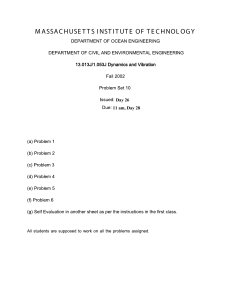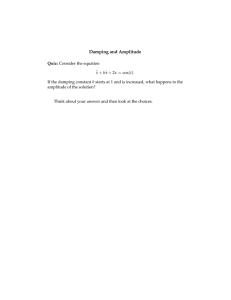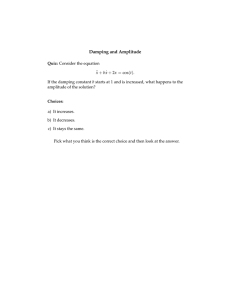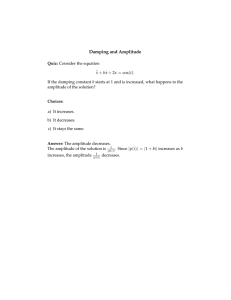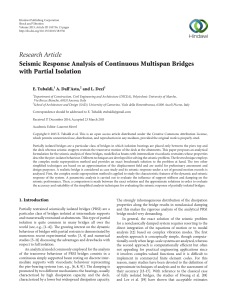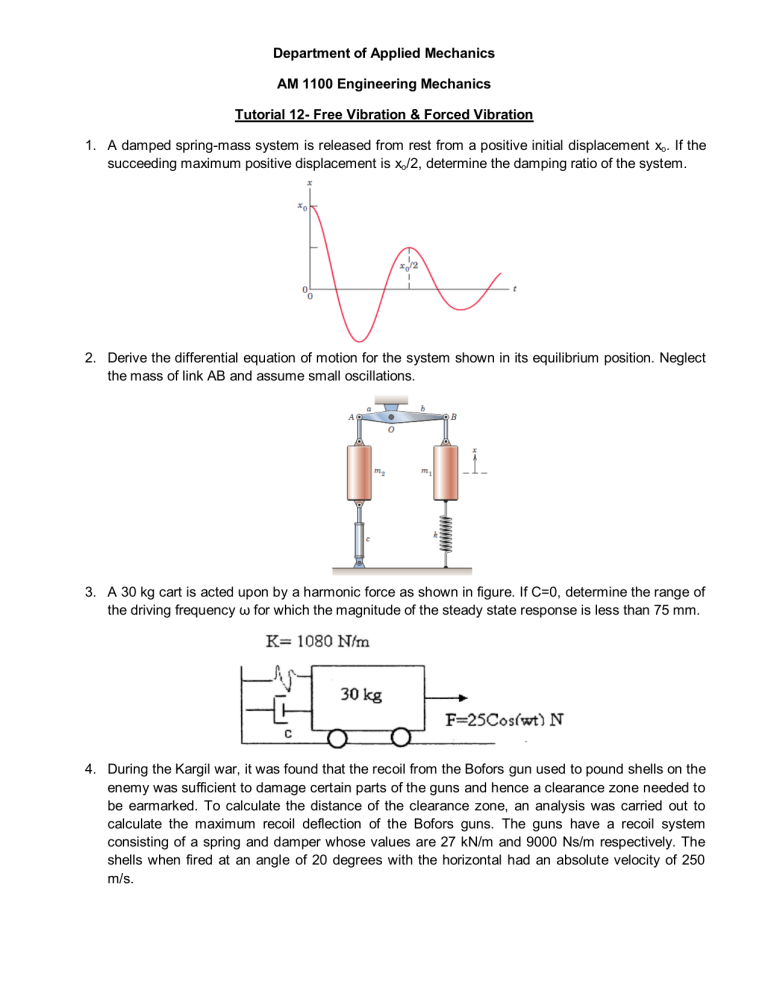
Department of Applied Mechanics AM 1100 Engineering Mechanics Tutorial 12- Free Vibration & Forced Vibration 1. A damped spring-mass system is released from rest from a positive initial displacement xo. If the succeeding maximum positive displacement is xo/2, determine the damping ratio of the system. 2. Derive the differential equation of motion for the system shown in its equilibrium position. Neglect the mass of link AB and assume small oscillations. 3. A 30 kg cart is acted upon by a harmonic force as shown in figure. If C=0, determine the range of the driving frequency ω for which the magnitude of the steady state response is less than 75 mm. 4. During the Kargil war, it was found that the recoil from the Bofors gun used to pound shells on the enemy was sufficient to damage certain parts of the guns and hence a clearance zone needed to be earmarked. To calculate the distance of the clearance zone, an analysis was carried out to calculate the maximum recoil deflection of the Bofors guns. The guns have a recoil system consisting of a spring and damper whose values are 27 kN/m and 9000 Ns/m respectively. The shells when fired at an angle of 20 degrees with the horizontal had an absolute velocity of 250 m/s. The mass of the shells was 4.5 kg and that of the cart and guns was 750 kg. Calculate the maximum recoil deflection xmax of the guns. 5. A control tab of an airplane elevator is hinged about an axis in the elevator, shown at the point O in figure, and activated by a control linkage behaving like a torsional spring of stiffness K T. The mass moment of inertia of the control tab is I o, so the natural frequency of the system is 𝜔𝑛 = 𝐾𝑇 /𝐼𝑜 . Because KT cannot calculate exactly, it is necessary to obtain the natural frequency 𝜔𝑛 experimentally. To this end, the elevator is held fixed and the tab is excited harmonically by means of the spring K2, while restrained by the spring K1, and the excitation frequency 𝜔𝑟 is reached. Calculate the natural frequency 𝜔𝑛 of the control tab in terms of 𝜔𝑟 and the parameters of the experimental setup. 6. A control console containing delicate instrumentation is to be located on the floor of a space shuttle where it has been determined that the floor slab is vibrating vertically with amplitude of 0.75 mm at 20 Hz. If the weight of the console is 400 kg, determine the stiffness of the vibration isolation system, required to reduce the vertical-motion amplitude of the console to 0.125 mm. 7. The 4-kg circular disk is attached to three springs, each spring having a stiffness k = 180 N/m. If the disk is immersed in a fluid and given a downward velocity of 0.3 m/s at the equilibrium position, determine the equation which describes the motion. Consider positive displacement to be measured downward, and that fluid resistance acting on the disk furnishes a damping force having a magnitude F = (60IvI) N, where v is the velocity of the block in m/ s. 8. Determine the differential equation of motion for the damped vibratory system shown. What type of motion occurs? Take k = 100 N/m, c = 200 N·s/m, m = 25 kg. 9. Attachment B is given a horizontal motion 𝑥𝐵 = 𝑏 cos 𝜔𝑡 Derive the equation of motion for the mass m and state the critical frequency 𝜔𝑐 for which the oscillations of the mass become excessively large. What is the damping ratio for the system? 10. The seismic instrument is mounted on a structure which has a vertical vibration with a frequency of 5 Hz and a double amplitude of 18 mm. The sensing element has a mass m=2kg, and the spring stiffness is k=1.5kN/m. The motion of the mass relative to the instrument base is recorded on a revolving drum and shows a double amplitude of 24 mm during the steady-state condition. Calculate the viscous damping constant c.

